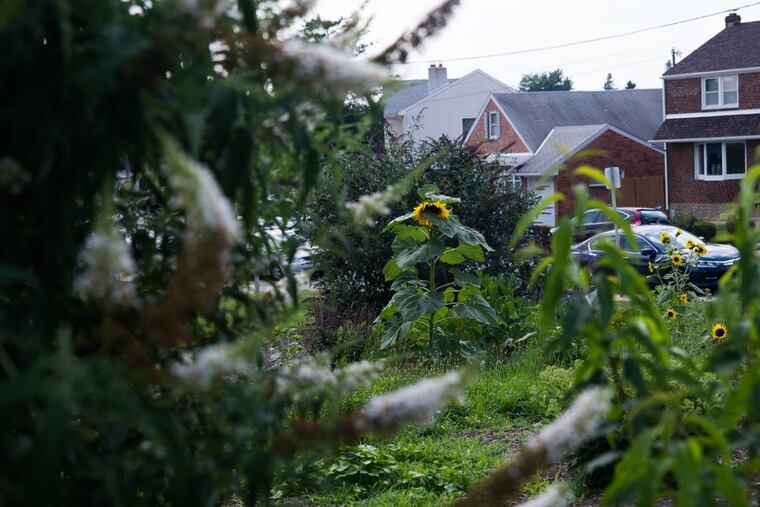Philly schools win national attention for environmental efforts
The Philadelphia School District won a U.S. Department of Education Green Ribbon for its work on sustainability issues. Despite academic and fiscal challenges, the district is placing a priority on greening schoolyards, reducing energy use, and sending less waste to landfills, it says.

It started nearly four years ago as an idea: What if one of the nation's largest school districts tackled — in a serious and systemwide way — reducing its environmental impact?
Francine Locke, the district's environmental director, knew that was a lofty goal for the Philadelphia School District, with its perpetual money concerns and its aging stock of 200-plus schools, many of which struggle academically. But she wanted to try anyway.
"This," said Locke, "is really important work."
It has paid off — in energy bills reduced, recycling programs launched, and blacktop yards transformed to green places for children to play. This summer, Locke traveled to the White House to accept, on the school system's behalf, a major national prize for its environmental work.
The district won a 2017 U.S. Department of Education Green Ribbon for its efforts, driven by GreenFutures, the school system's five-year sustainability plan that has goals for conserving resources, decreasing consumption and waste, creating healthy indoor environments, and more. It was one of just nine school systems in the country to win the prize, which is given annually.
GreenFutures, released in 2016, identified 65 actions the district pledged to take by 2020, from starting a composting program to increasing the number of students who walk or bike to school.
The district wants to decrease its energy consumption by at least 20 percent, drop what it deposits in landfills by 10 percent, and transform with green spaces an average of five schoolyards a year.
Its leaders point to work already underway or completed: rain gardens in some schools; nine schoolyards greened; a plan to install more energy-efficient LED lights at schools throughout the city; $1 million spent to install hydration stations for safe, clean water; decluttering projects to reduce asthma triggers at every school; and school-led recycling projects.
In 2009, the district spent $65.4 million on electricity bills. By the end of this fiscal year, it will spend $35 million.
Fran Burns, who until recently was the district's chief operating officer, said the work wasn't all new.
"The district already had a focus and priorities in academics, but this was a way to start talking about sustainability as a focus, too," Burns said. "This was a way to take what we were already doing, to bring in partners, to add to it and enhance it."
To be sure, problems remain. The district has a stockpile of aging buildings, and it recently concluded they would cost $5 billion to bring to a state of full repair.
A group of parents, environmental advocates, City Council members, and labor unions earlier this year launched a coalition to pressure the district on environmental issues, saying that the system lets unhealthy environments fester in too many buildings and that it is not transparent enough in sharing information. School officials have rejected these assertions.
But to some, the GreenFutures work has injected new purpose into their schools.
At Fox Chase Elementary in the Northeast, GreenFutures' focus on sustainability has dovetailed with the school's reinvention. Since 2016, Fox Chase has focused on agricultural education, using a partnership with Fox Chase Farm to hook students' attention through projects and hands-on learning.
The K-5 school now has an arboretum in its side yard and an old red tractor parked on the lawn to symbolize what goes on at the school. Inside, there are grow carts that house hundreds of plants, and an agricultural lab where children can learn about the life cycle of trout. Every student at the school is involved in some way, from caring for the crops to spending time at the farm, which is nearby.
Farming isn't necessarily the first thing people think of when they look at the school set amid a dense residential neighborhood, said Robert Caroselli, the school's energetic principal. But it has driven student interest — the school's enrollment has swelled to more than 500 students, up from 430 — and achievement.
"I'm a city boy — I didn't know anything about farming," Caroselli said. "But I'm passionate about this. It engages the kids."
Now that the school has had a taste of agriculture and sustainability education, Caroselli wants more.
"I'd love to go up on the roof — to add wind turbines and solar panels," he said.